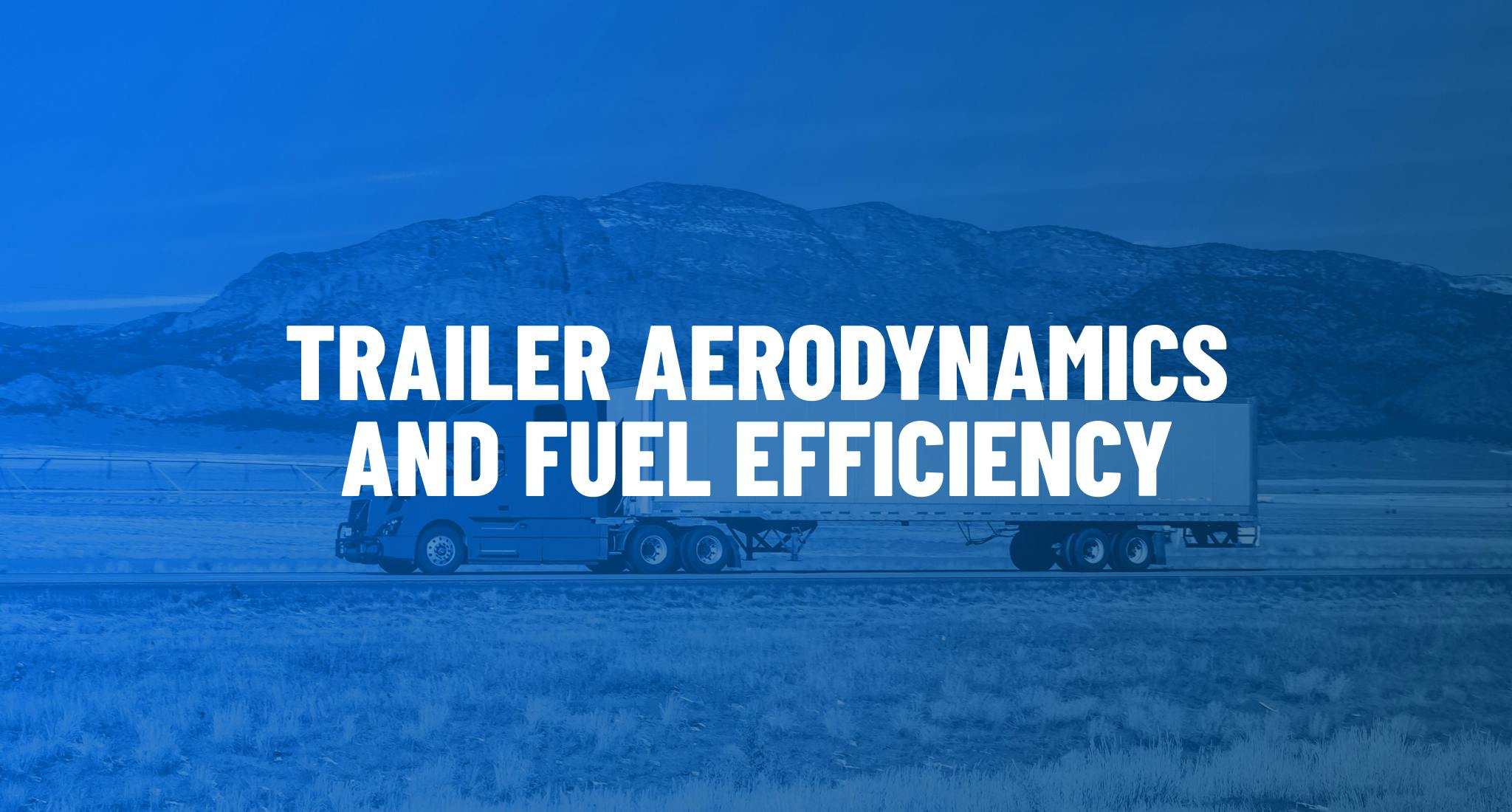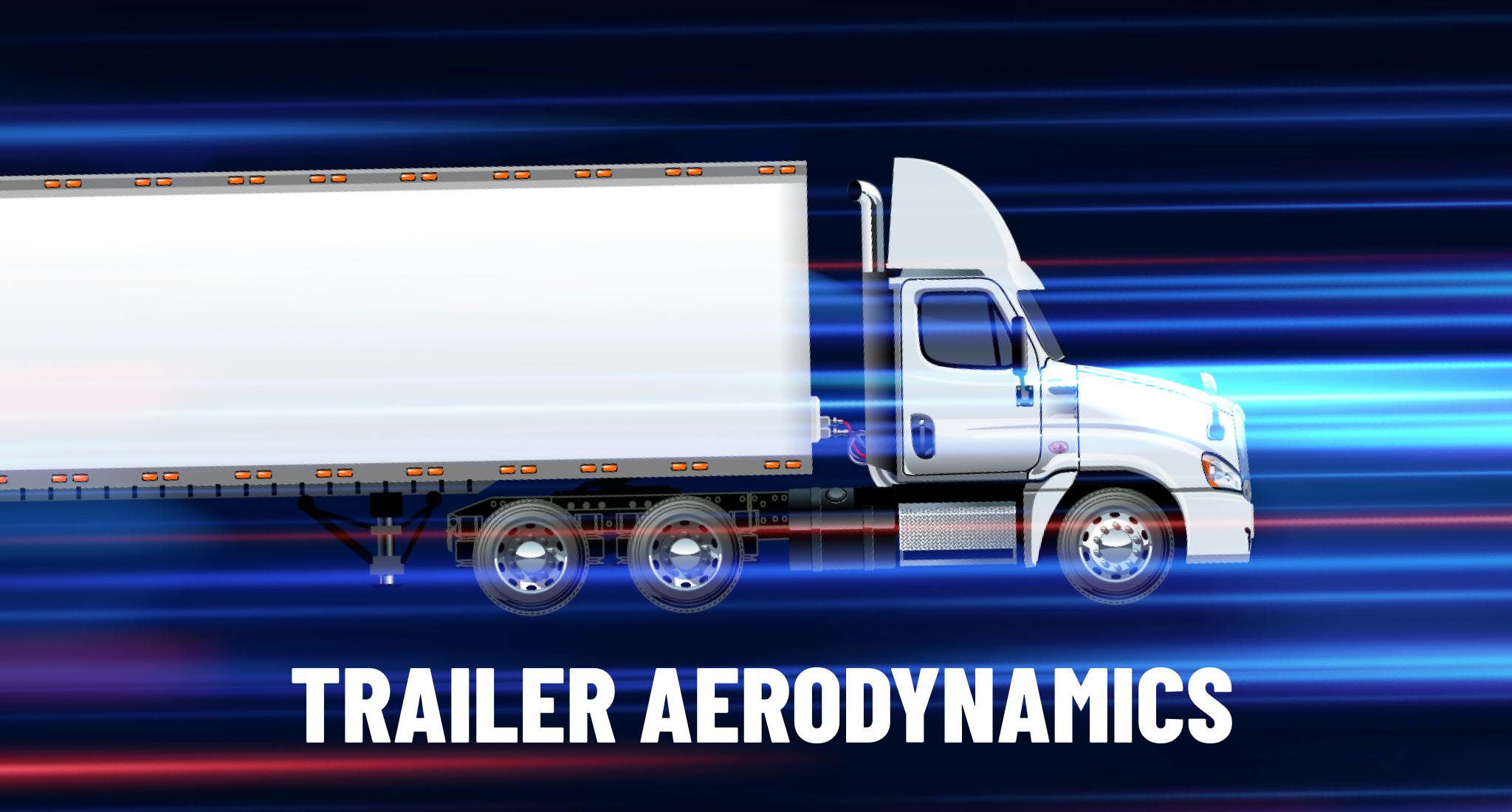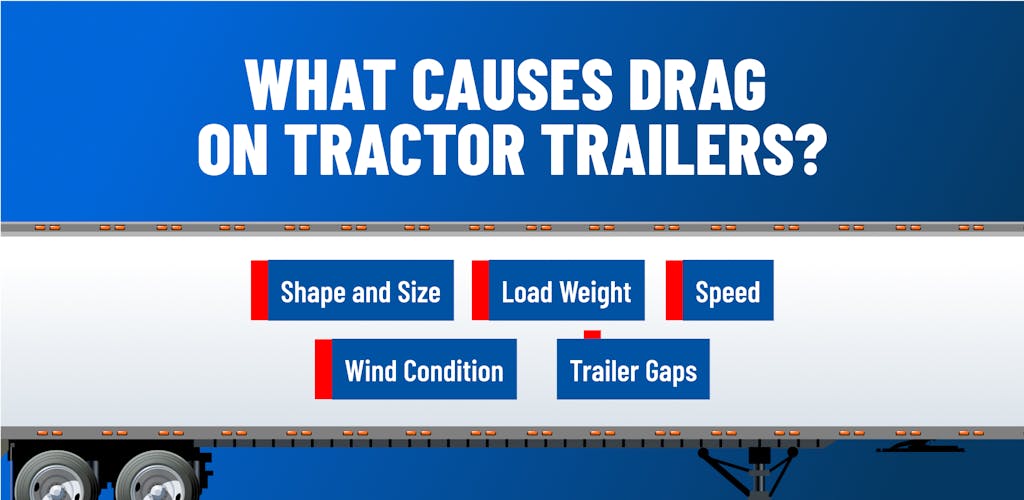Trailer Aerodynamics and Fuel Efficiency
January 9th, 2024

Aerodynamics plays a big role in determining your car’s fuel efficiency, and an even bigger role when we’re talking about semi-trailers. When trailers are designed to move smoothly through the air, they create less drag, which saves fuel and the environment.
This is important not just for truckers, but for everyone in the supply chain. From manufacturers to retailers, everyone benefits when trucks use less fuel because it can help reduce costs.
Better fuel efficiency is a win-win for everyone. For truck drivers, it means spending less on gas and being able to go further on a single tank. For businesses, it leads to lower shipping costs, which translates to lower costs for consumers. And for the environment, it means fewer emissions. Improving trailer aerodynamics is a smart move that helps the whole supply chain work more efficiently and responsibly.
What Are Trailer Aerodynamics?

Trailer aerodynamics focuses on how trailers are designed to move through the air more efficiently. It’s about shaping and designing trailers so they can slice through the air with less effort. By smoothing out sharp edges and adding curves to the trailer’s body, these design tweaks help reduce air resistance, known as drag. When a trailer is more aerodynamic, it’s easier for the truck to pull it, which leads to less fuel use and a more efficient supply chain.
The principles of semi-truck aerodynamics in trailer design involve understanding how air flows around large objects. Designers increase a trailer’s aerodynamics by adding features like rounded corners, flat panels, and streamlined edges.
These features help the air glide over and around the trailer more smoothly, cutting down on the turbulence and drag that slow the truck down. By reducing drag, trucks can maintain higher speeds without needing more fuel, making the whole process of transporting goods more efficient and environmentally friendly. This approach to design not only saves fuel and money but also contributes to reducing the carbon footprint of the transportation industry.
What Causes Drag on Tractor Trailers?

Drag on tractor-trailers is like a force that pulls back on the truck as it moves forward. It’s caused by air hitting the truck and trailer, creating resistance. The bigger and boxier the trailer, the more air it pushes against, and the harder it is for the truck to move forward. This resistance can add up, especially at higher speeds on highways, making the truck use more fuel.
Several factors contribute to drag on tractor-trailers:
- Shape and Size: The larger and less streamlined the trailer, the more air it has to push through. This is why the design of the trailer is so important. Sharp edges and flat surfaces create more drag.
- Speed: The faster a truck goes, the more air it has to push out of the way. This means more drag and more fuel used to maintain speed.
- Wind Conditions: Windy conditions can increase drag, especially if the wind is blowing against the direction the truck is traveling. Crosswinds can also create additional drag by hitting the sides of the trailer.
- Trailer Gaps: Spaces between the tractor and the trailer, and between the trailer and the road, allow air to get trapped and swirl around, which increases drag.
- Load Weight: Heavier loads require more power to move, which can increase drag, especially when going uphill or accelerating.
The trucking industry is always looking for ways to improve tractor-trailer aerodynamics, and these factors are key to achieving a more streamlined, eco-friendly supply chain for everyone.
Semi Trailer Aerodynamic Devices
To combat the drag that semi-trailers face, the trucking industry has developed various aerodynamic devices. These devices are designed to streamline the trailer, reducing air resistance and improving semi-truck fuel efficiency.
Here’s a look at some of the key features of an aerodynamic rig:
Truck Trailer Tails
Truck trailer tails are attachments that go on the back of the trailer. They look a bit like folded wings and work by smoothing out the airflow as it leaves the trailer. This reduces turbulence and drag at the rear of the trailer, which is a major source of resistance. By using trailer tails, trucks can see a significant improvement in fuel efficiency.
Airflow Trailer
An airflow trailer is designed with aerodynamics in mind from the ground up. Its shape is more streamlined compared to traditional trailers, with curved edges and a design that allows air to flow smoothly over and around it. This reduces drag significantly, making the trailer much more fuel-efficient.
Trailer Fairings
Trailer fairings are panels that are attached to the sides and bottom of the trailer. They help guide air smoothly around the trailer, reducing the drag caused by air getting trapped under or around the sides. Fairings are particularly effective in reducing the turbulence and resistance created by the wheels and undercarriage of the trailer.
Trailer Door Gap Cover
The gap between the trailer and the tractor can create a lot of drag. Trailer door gap covers are designed to bridge this gap, smoothing out the airflow between the tractor and trailer. This reduces the turbulence and drag that occurs in this area, improving the overall aerodynamics of the semi-trailer.
Wheel Covers and Mud Flaps
Wheel covers and mud flaps are used to streamline the wheels and the rear of the trailer. Wheel covers smooth out the airflow around the wheels, while aerodynamic mud flaps reduce the drag caused by air hitting the back of the trailer. Both of these devices help in reducing the overall resistance faced by the trailer, contributing to better fuel efficiency.
Drag and How it Impacts Semi-Trailer Fuel Efficiency
Drag is a significant factor affecting fuel efficiency in semi-trucks. As a truck moves, air resistance, or drag, works against it, requiring more fuel to maintain speed and momentum. The more drag a trailer experiences, the harder the engine has to work, leading to higher fuel consumption. This is where trailer aerodynamics play a crucial role.
By improving the design and adding aerodynamic devices to trailers, drag can be significantly reduced, leading to a smoother airflow around the trailer, decreasing the resistance and, consequently, the amount of fuel needed. The relationship between drag and fuel efficiency is direct; as drag decreases, fuel efficiency increases, making aerodynamics an essential factor across the entire logistics industry.
The Importance of Trailer Aerodynamics
The importance of trailer aerodynamics cannot be overstated in the context of modern trucking. As we’ve seen, aerodynamic improvements to trailers can lead to significant reductions in drag, which directly translates to improved fuel efficiency. This not only helps in cutting down operational costs for trucking companies but also contributes to environmental sustainability by reducing fuel consumption and greenhouse gas emissions.
Investing in aerodynamic features like truck trailer tails, airflow trailers, trailer fairings, door gap covers, wheel covers, and mud flaps is a smart move for any fleet. By doing so, companies can enjoy long-term savings and play a part in creating a more sustainable future. We recommend readers consider these aerodynamic solutions to enhance their fleet’s performance and efficiency.
FAQ
What percentage of fuel can be saved by using aerodynamic trailers?
Using aerodynamic trailers can lead to significant fuel savings. On average, improvements in trailer aerodynamics can result in fuel savings of about 5% to 10%. This percentage can vary based on the specific aerodynamic features used and the type of routes typically driven.
How much does aerodynamics affect MPG?
Aerodynamics can have a substantial impact on a semi truck’s miles per gallon (MPG). By reducing drag, aerodynamic trailers can improve a truck’s MPG by several points. The exact improvement depends on factors like the truck’s design, speed, and the aerodynamic devices used.
Does trailer height affect MPG?
Yes, trailer height can affect MPG. Taller trailers present a larger surface area to the wind, increasing drag and potentially reducing fuel efficiency. However, the overall impact of trailer height on MPG also depends on other factors like trailer design and the presence of aerodynamic aids.
Learn More with Hale Trailer
For more insights and information on trailer aerodynamics, fuel efficiency, and the latest in trailer technology, visit Hale Trailer. For the latest and greatest aerodynamic trailers for your shipping needs, explore our inventory online or come see our fleet in person at one of our locations.
All the information on this website – https://www.haletrailer.com – is published in good faith and for general information purposes only. Hale Trailer Brake and Wheel does not make any warranties about the completeness, reliability and accuracy of this information. Any action you take upon the information you find on this website, is strictly at your own risk. Hale Trailer Brake and Wheel will not be liable for any losses and/or damages in connection with the use of our website.
